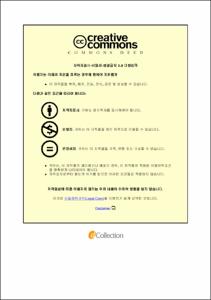Ulsan Univ. Repository
Thesis
General Graduate School
Environmental Construction Engineering
1. Theses (Master)
Mechanical Properties of the Rubber Material Used in Elastomeric Bridge Bearing Considering the Effects of Aging.
- Abstract
- Abstract
Mechanical Properties of the Rubber Material Used in Elastomeric Bridge Bearing Considering the Effects of Aging
University of Ulsan
Department of Civil and Environmental Engineering
Henry Quona Taylor
Bridge systems are subjected to certain movements, induced by external or dead loading, which has necessitated the inclusion of support devices with the capabilities to efficiently dissipate energy and protect the bridge pier from unwanted stress concentration. These criteria are effectively met by elastomeric bearings, whose primary material, rubber, has elasticity properties suitable for base isolation. The performance of these bearings whose service life is about 100years is dependent on the behaviour of the rubber material over time.
Pursuant with understanding the behaviour of elastomeric bearing overtime, this study sought to determine the effects of aging on the material properties of the rubber used in elastomeric bearings considering Natural Rubber and Neoprene; to conduct member level simulations of the elastomeric bearing blocks and determine the changes in stiffness of the aged rubber bearing and to evaluate the effects of the different assumptions surrounding the modes aging on the behaviour of aged rubber bearing.
In its pursuit, the Study discovered that neoprene performs better than natural Rubber with respect to the physical changes, tensile and shear, in the vulcanizates and that the effects of the aging conditions applied were more prominent in their tensile behaviour than it was with their shear. Also evident from the study was that the models with neoprene had lesser changes in the shear stiffness as they aged than did Natural Rubber. Natural rubber produced a maximum shear stiffness increase of 18.73% while neoprene produced a maximum shear difference of a meagre 2.89%. it was noticed that the Bearing models under combined loading of compression and shear developed maximum shear at the interface between the rubber and steel plates
|요약
노화의 영향을 고려한 교량 탄성받침의 고무 재료의 기계적 성질
울산대학교 대학원
건설환경공학과
핸리 쿠오나 테일러
교량의 교각은 지진하중에 의해 큰 외력(모멘트 및 전단력)을 받게 된다. 이러한 지진력에 의한 에너지를 효과적으로 소산시켜서 원치 않는 부재력(응력)이 집중되지 않도록 하는 것이 중요하다. 이를 위하여 고무재료를 기반으로 하는 탄성받침이나 지진보호받침을 적용하는 경우가 점차 증가하고 있다. 교량의 공용수명이 약 100년 정도임을 감안하면 교량의 고무받침의 성능은 시간이 경과함에 따라 역학적 거동 특성에 변화가 생긴다.
이 연구에서는 노화(열화)에 따른 탄성받침의 거동을 이해하기 위해 탄성받침에 사용되는 천연고무와 합성고무의 역학적 특성 변화를 실험을 통하여 분석하였으며, 이들 재료를 기반으로 하는 탄성받침의 부재 수준의 역학적 거동 특성변화를 해석을 수행하여 분석, 평가하였다.
이 연구를 통해, 합성고무가 천연고무에 비해 인장(tension) 및 전단(shear)의 물리적 변화가 훨씬 크다는 것을 알았으며, 또한 전단에 비해 인장의 역학적 특성이 노화에 크게 영향을 받는 것을 확인하였다.
노후화에 의한 강성의 변화는 천연고무에서는 최대 전단 강성이 18.73% 증가했고 합성고무는 2.89%로 증가하였다. 또한, 파단시의 최대 연신율은 감소하였다.
이러한 교량 받침의 역학적 특성 변화는 교량의 진동주기를 작게하여 교량에 발생하는 지진력을 증가시키기때문에 시간 경과에 따른 고무받침의 노후화가 교량의 내진성능을 악화시킬 수 있다는 것을 알 수 있다.
- Issued Date
- 2019
- Awarded Date
- 2020-02
- Type
- Dissertation
- Affiliation
- 울산대학교
- Department
- 일반대학원 건설환경공학과
- Advisor
- Professor. Kim Ick Hyun
- Degree
- Master
- Publisher
- 울산대학교 일반대학원 건설환경공학과
- Language
- eng
- Rights
- 울산대학교 논문은 저작권에 의해 보호받습니다.
- Appears in Collections:
- Environmental Construction Engineering > 1. Theses (Master)
- 파일 목록
-
-
Download
 200000292042.pdf
기타 데이터 / 5.37 MB / Adobe PDF
200000292042.pdf
기타 데이터 / 5.37 MB / Adobe PDF
-
Items in Repository are protected by copyright, with all rights reserved, unless otherwise indicated.